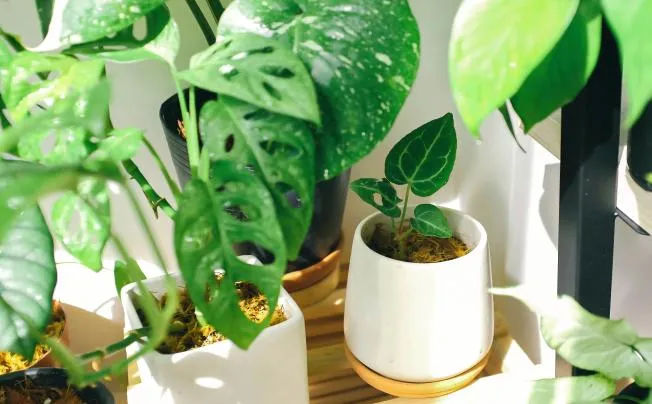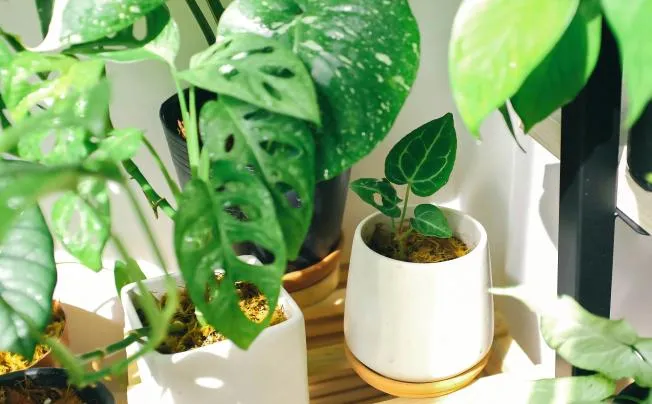Does Galvanized Steel Leach Into Garden Soil?
In the wonderful world of gardening, we always cherish our love for green life and take good care of every plant.
Zinc release mechanism
Moisture acts as a "key" to unlock the release of zinc from the soil. In the soil, water creates an electrolyte solution that creates the ideal environment for zinc dissolution. Zinc and water have a chemical reaction during this process, which causes it to progressively dissolve in the soil solution.
The release of zinc is also significantly influenced by the pH level of the soil. High concentrations of hydrogen ions in acidic soils cause them to chemically react with zinc to generate soluble zinc salts, which speeds up zinc release. According to related research, the rate of zinc release increases dramatically when the soil's pH falls below 6. On the other hand, zinc releases more slowly in alkaline soils. This is because the alkaline environment's hydroxide ions react with zinc to create a protective layer of zinc hydroxide that is comparatively stable and slows down the metal's rate of dissolution.
Additionally, the activity of microorganisms in the soil is an important consideration. Through their own metabolic processes, microorganisms alter the soil's microenvironment; some can produce acidic substances, such as carbonic acid and organic acids, which lower the pH of the soil and encourage the release of zinc; other microorganisms consume oxygen in the soil, resulting in an anaerobic environment that alters zinc corrosion and release mechanisms.

Effects on plants and soil
Impact on the growth of plants
One of the trace elements required for plant growth is zinc. Zinc is a part of the enzyme carbonic anhydrase, which helps photosynthesis proceed smoothly by catalysing the hydration of carbon dioxide. A adequate amount of zinc can help plants use light energy more efficiently, transform carbon dioxide and water into organic matter, increase photosynthetic efficiency, and supply enough energy and material basis for plant growth.
Additionally, zinc has a role in plant auxin metabolism. Cell elongation, division, and differentiation are just a few of the many regulatory impacts that auxin, a crucial plant hormone, has on plant growth and development. Normal plant growth can be ensured by zinc's ability to stimulate auxin synthesis and preserve auxin balance. When plants lack zinc, their ability to synthesise auxin is impeded, which can lead to dwarfism, shortened internodes, smaller and malformed leaves, and significant consequences for plant growth and development.
On the other hand, an excessive amount of zinc in the soil will also prevent plant roots from growing, altering the structure and functionality of the root system. An essential organ for plants to receive nutrients and water is the root system. The plant's ability to absorb water and nutrients will be directly impacted by the obstruction of root growth, which will subsequently have an impact on the plant's overall growth. Additionally, too much zinc will interfere with the plant's ability to absorb other mineral minerals, resulting in a nutritional imbalance. Zinc has an antagonistic connection with elements like copper, manganese, and iron. Plant chlorosis and growth abnormalities will result from too much zinc, which will prevent the plant from absorbing these nutrients.

Effects on soil ecosystems
An essential component of the soil ecology are soil microorganisms. Soil microbial communities' form and function will be significantly impacted by changes in zinc level. The tolerance of various soil bacteria to zinc varies. Certain bacteria have heightened zinc sensitivity. They will not be able to develop and reproduce if the soil has an excessive amount of zinc. Nonetheless, fungi are comparatively resistant to zinc. Zinc can even encourage the growth of fungus within a specific concentration range. The structure of soil microbial communities may change as a result of an increase in fungus in soils with a high zinc level.
The characteristics of soil colloids and the interactions between soil particles can be impacted by changes in zinc content, which in turn can alter the structure of the soil. A suitable quantity of zinc can increase soil air and water permeability, encourage the coagulation of soil colloids, and cause soil particles to form stable aggregates. Excessive zinc, on the other hand, will produce compaction, poor air and water permeability, disperse soil particles, decrease soil aggregation, and disrupt the structure of soil colloids. Plant roots cannot grow and develop in such soil, and the activity of soil microbes will also be impacted.
The capacity of soil to supply and coordinate heat, air, water, and nutrients for plant growth is known as soil fertility. Soil fertility will be impacted either directly or indirectly by changes in zinc content. Zinc is an activator or component of numerous enzymes that aid in the conversion of nutrients and the breakdown of organic matter in the soil. An adequate quantity of zinc can increase soil fertility, release more minerals, and encourage the breakdown of organic materials in the soil. However, as was already noted, too much zinc will alter soil structure and microorganism activity, which will lower soil fertility. The development of soil fertility may be further impacted by excessive zinc in the soil, which can also make it more difficult for plants to absorb specific minerals.

Coping strategies and suggestions
Precautions
Consider the product's quality while selecting galvanised steel items for the garden. High-quality galvanised steel may minimise excessive zinc release while maintaining the protective effect because of its consistent zinc coating and reasonable thickness. You can choose galvanised steel planting troughs with a smooth surface, no visible flaws, and a zinc layer thickness that satisfies standards by consulting the product's pertinent quality inspection report. Galvanised steel should not be used extensively in extremely acidic soils (pH < 6). If the soil is extremely acidic, you can start by improving it by adding alkaline materials, such lime, to bring the pH level closer to neutral. This can lessen the discharge of zinc and the corrosive effect of the soil on galvanised steel. When using galvanised steel flower racks, you can limit the risk of zinc release by reducing direct contact between the galvanised steel and the soil by applying a layer of plastic film or a rubber pad to the area where the flower rack touches the ground.
Identification and control
Testing the zinc content of garden soil on a regular basis is absolutely essential. You have two options: send soil samples to reputable testing organisations for analysis, or utilise professional soil testing equipment. Generally speaking, testing should be done once a year or every two years to monitor changes in the soil's zinc level. A number of actions can be made to enhance the soil if the test indicates that the zinc level is very high. An efficient technique is to add organic fertilisers, like as manure, compost, and decomposed compost. Because of their high organic matter content, these fertilisers can both boost the soil's capacity to absorb zinc and decrease its effectiveness. In order to lessen the amount of zinc in the soil through plant absorption, you can also plant plants that have a high tolerance to zinc, such maize and sunflowers. When it comes to plant management, plants that have already displayed signs of zinc poisoning should receive prompt treatment. Watering and flushing can lower the amount of zinc in the soil, but be careful not to water too much as this can lead to waterlogging. Because too much nitrogen and phosphorus fertiliser can enhance the plant's absorption of zinc, which will exacerbate the symptoms of zinc poisoning, you can also modify the fertilisation plan to apply less of these nutrients.

Selected Blogs
-
What customization services are available for metalworking customization?
2024-12-12
-
What Is The Difference Between A Plant Container And A Raised Bed?
2024-04-23
-
Garden Screening & Fence Panels
2024-04-23
-
Gardening pot selection tips
2024-04-17
-
The function and collocation of horticultural fire pot
2024-04-17


